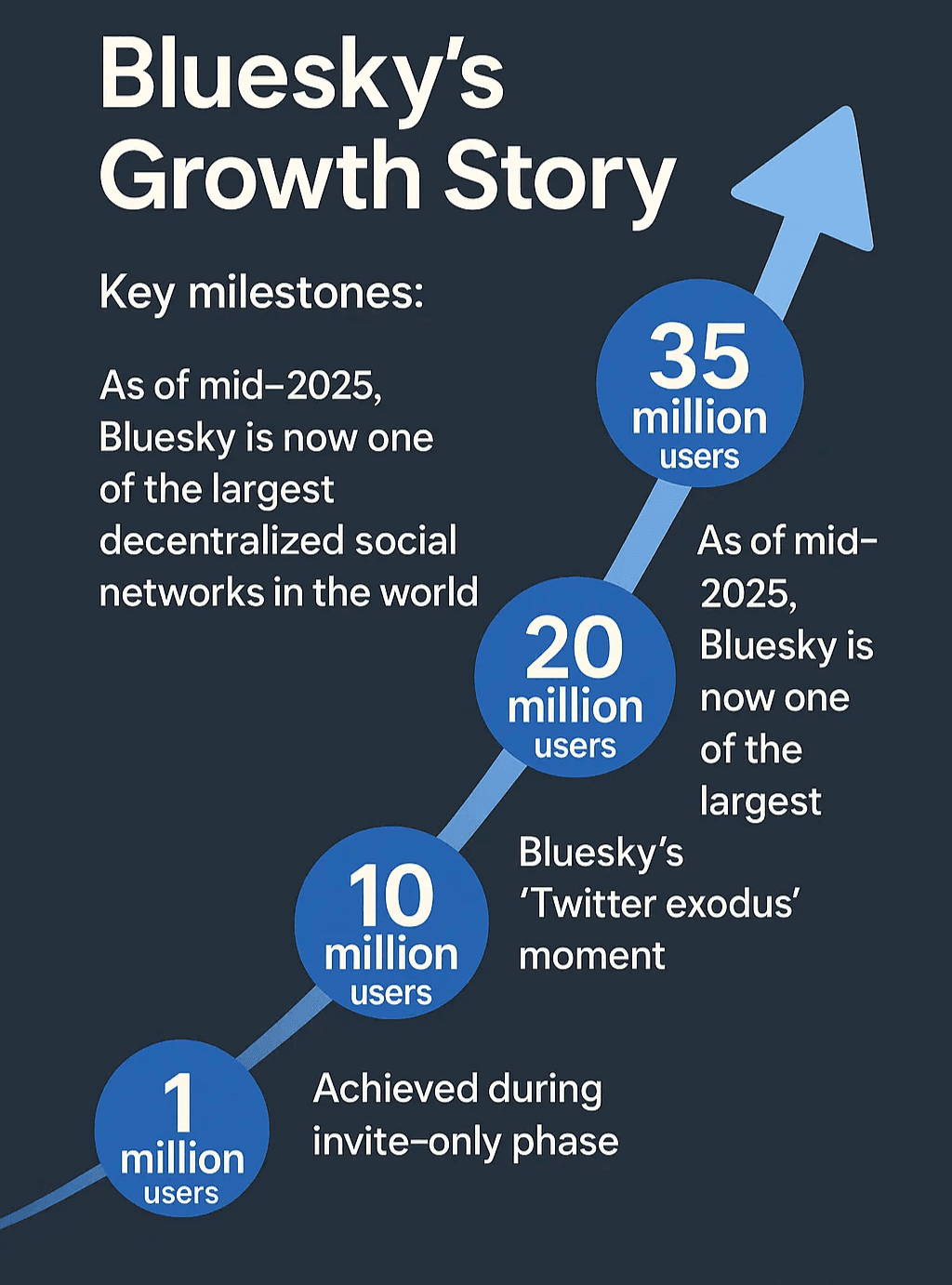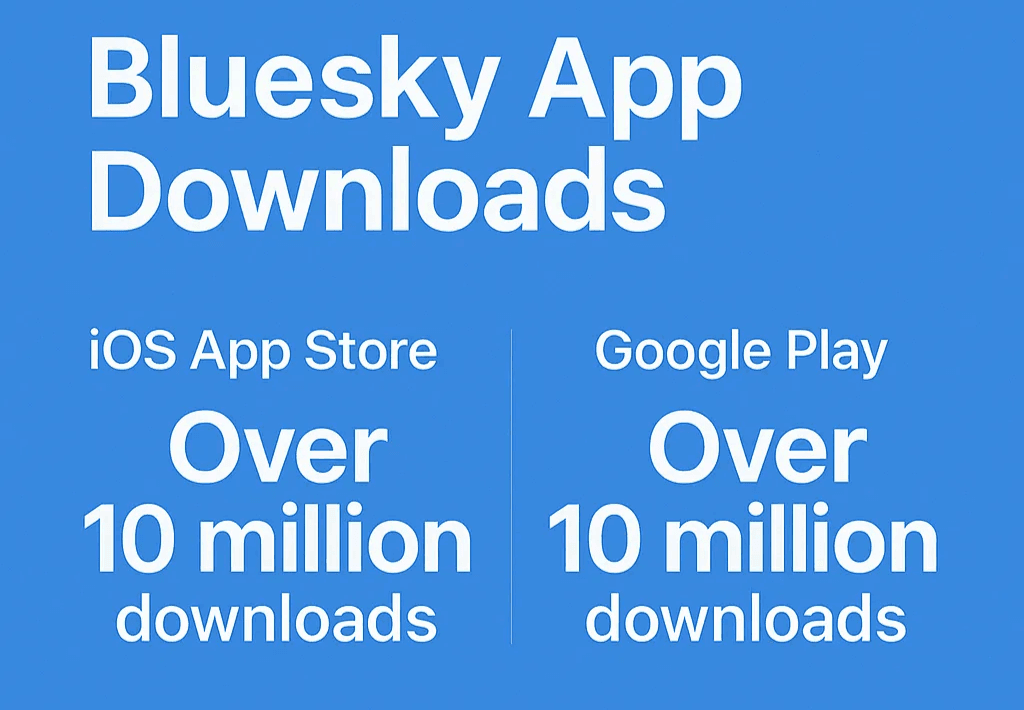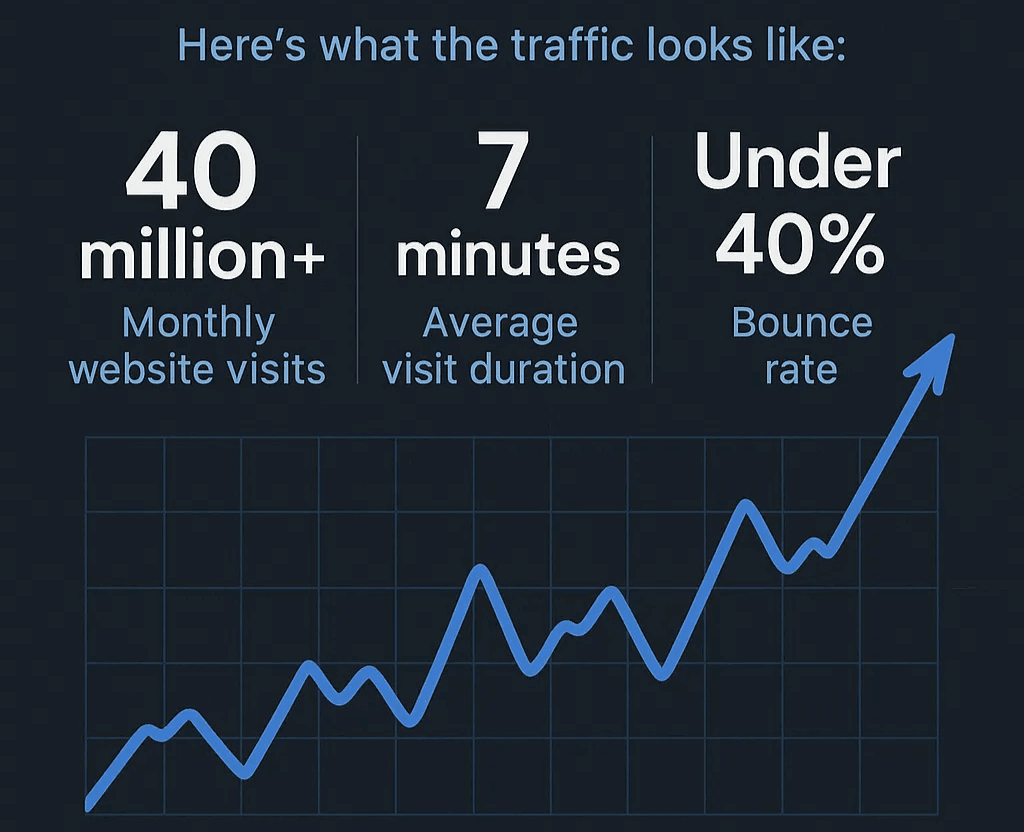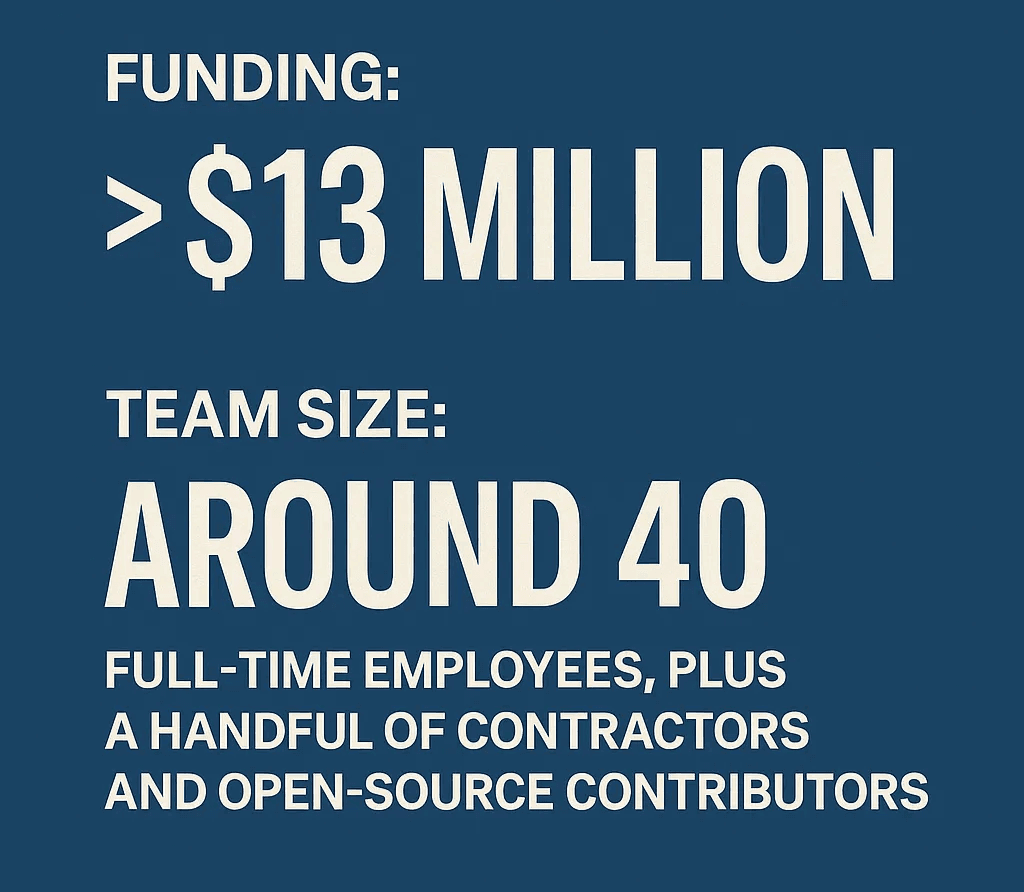When I first heard about , it was one of those “wait, is this for real?” moments. A social network that’s not run by a single company, but instead is built on open protocols, giving users more control? As someone who’s spent years in SaaS and automation, I’ve seen plenty of platforms claim to “change the internet,” but Bluesky’s approach to decentralization is genuinely intriguing—and it’s catching on fast.
In the last year, Bluesky has gone from a niche invite-only experiment to a headline-grabbing alternative to X (formerly Twitter). The numbers are growing so quickly that even seasoned tech analysts are doing double-takes. Whether you’re a marketer, a developer, or just a social media nerd like me, tracking Bluesky statistics is now essential for understanding where the digital conversation is heading—and how the future of online communities might look a lot less centralized.
Bluesky Statistics at a Glance: Key Numbers for 2025
Let’s start with the big picture. Here are the headline stats everyone’s talking about for Bluesky in 2025:
| Metric | Value (2025) | Notes/Source |
|---|---|---|
| Total Registered Users | 35 million+ | TechCrunch |
| Daily Active Users (DAU) | 2.5–3 million | Statista |
| App Downloads (iOS + Android) | 20 million+ | [App Store, Google Play] |
| Monthly Website Visits | 40 million+ | Semrush |
| Employee Count | ~40 | |
| Funding Raised | $13 million+ | Crunchbase |
Quick Stat: Bluesky hit 35 million registered users just months after opening to the public, a pace that rivals some of the fastest-growing social platforms in recent memory.
Bluesky User Growth: How Fast Is the Network Expanding?
Bluesky’s growth story is one for the books. I remember when you needed an invite code just to peek inside—those codes were like golden tickets. But once the doors opened to everyone, user numbers shot up like a SpaceX rocket on launch day.
Key milestones:

- First 1 million users: Achieved during the invite-only phase, mostly tech enthusiasts and early adopters.
- 10 million users: Reached within weeks of going public.
- 20 million users: Bluesky’s “Twitter exodus” moment, as more users sought decentralized alternatives.
- 35 million users: As of mid-2025, Bluesky is now one of the largest decentralized social networks in the world.
Bluesky Registered Users Over Time
Here’s a rough breakdown of Bluesky’s user growth (numbers are rounded for clarity):
| Date | Registered Users |
|---|---|
| Q2 2023 | 500,000 |
| Q3 2023 | 2 million |
| Q4 2023 | 5 million |
| Q1 2024 | 10 million |
| Q2 2024 | 20 million |
| Q3 2024 | 30 million |
| Q2 2025 | 35 million+ |
The biggest spike came right after the public launch, with millions signing up in a matter of weeks. Media coverage, viral posts, and the growing appetite for alternatives to X/Twitter all played a role.
How does this compare to other networks? Bluesky’s trajectory is reminiscent of the early days of Clubhouse or Threads, but with more staying power thanks to its open, decentralized foundation.
Bluesky App Downloads: Tracking Adoption on Mobile
App downloads are a great proxy for mainstream adoption. Bluesky’s mobile apps have seen impressive numbers:

- iOS App Store: Over 10 million downloads
- Google Play: Over 10 million downloads
Notably, app downloads surged during two key moments:
- Public launch: Downloads tripled in the first week.
- Major X/Twitter controversies: Each time X made headlines (algorithm changes, API restrictions), Bluesky saw a spike in downloads.
Compared to other decentralized social apps, Bluesky’s mobile adoption is outpacing Mastodon and Nostr, both of which took longer to reach similar download numbers.
Bluesky Daily Active Users: Engagement on the Rise
Registered users are one thing, but daily active users (DAU) show who’s actually sticking around. Bluesky’s DAU has climbed steadily:
- Current DAU: Estimated 2.5–3 million
- DAU/Registered User Ratio: About 8–10%
This ratio is healthy for a new social network, especially one still building out features and moderation tools. For context, established platforms like Discord hover around 12–15% DAU/registered users, so Bluesky is closing in fast.
Key engagement drivers:
- Algorithmic feeds keep users coming back for fresh content.
- Open APIs allow developers to build custom clients and bots, boosting activity.
- Community-driven moderation helps maintain a positive vibe, which is a big draw for users tired of the chaos elsewhere.
Bluesky Website Traffic: Who’s Visiting and From Where?
Bluesky’s website isn’t just for signups—it’s a hub for web-based browsing, developer docs, and analytics dashboards. Here’s what the traffic looks like:

- Monthly website visits: 40 million+
- Average visit duration: 7 minutes
- Bounce rate: Under 40% (meaning most visitors stick around)
Traffic has grown in tandem with user numbers, but there are noticeable surges after major product announcements or viral moments.
Bluesky Website Traffic by Country
Here’s a look at where Bluesky’s web visitors are coming from:
| Country | % of Traffic |
|---|---|
| United States | 35% |
| Japan | 18% |
| Brazil | 9% |
| UK | 7% |
| Germany | 5% |
| Other | 26% |
The US is the largest market, but Japan and Brazil have emerged as unexpected powerhouses. Cultural factors—like Japan’s strong Twitter culture and Brazil’s love for social media—are helping drive adoption.
Bluesky Users by Country: Where Is the Community Growing?
Bluesky’s user base is increasingly global:
- United States: Still the largest single market, but now less than 40% of total users.
- Japan: Rapidly growing, thanks to a strong interest in decentralized tech and a vibrant local community.
- Brazil: Social media is huge here, and Bluesky is riding that wave.
- Europe: Steady growth, especially in Germany, the UK, and France.
Why these countries? In Japan, Twitter has long been the go-to platform, so Bluesky’s “Twitter, but decentralized” pitch resonates. In Brazil, social media adoption is sky-high, and users are quick to try new platforms.
Compared to Mastodon, which has a strong European base, Bluesky’s growth is more balanced between the Americas and Asia.
Bluesky Funding and Team: Who’s Powering the Platform?
Bluesky isn’t just a grassroots movement—it’s backed by serious funding and a tight-knit team.

- Funding: Over $13 million raised, with backing from Jack Dorsey (Twitter’s co-founder) and other notable investors.
- Team size: Around 40 full-time employees, plus a handful of contractors and open-source contributors.
The team is small but mighty, with a heavy focus on protocol development (the AT Protocol), moderation tools, and community support. Funding has allowed Bluesky to scale infrastructure quickly and attract top engineering talent.
What’s Driving Bluesky’s Growth? Decentralization, Features, and Community
So, why are millions flocking to Bluesky? Here’s what sets it apart:
1. Decentralized Architecture
Bluesky is built on the AT Protocol, which means:
- No single company controls your data.
- Users can choose their own moderation tools and algorithms.
- Developers can build custom clients, bots, and extensions.
This is a big deal for privacy advocates and anyone tired of the “walled garden” approach of traditional social media.
2. Key Features
- Algorithmic feeds: Users can pick or even create their own algorithms for what they see.
- Open APIs: Developers are building everything from analytics dashboards to meme bots.
- Community moderation: Instead of top-down rules, communities can set their own standards.
3. Vibrant Community
Bluesky’s early adopters are a mix of technologists, artists, journalists, and everyday users who want something different. The vibe is collaborative and experimental—think “early Twitter, but with more memes and fewer trolls.”
Bluesky vs. Other Decentralized Social Networks
How does Bluesky stack up against the competition? Let’s break it down:
| Platform | Registered Users | DAU | Decentralization Model | Key Strengths |
|---|---|---|---|---|
| Bluesky | 35M+ | 2.5–3M | AT Protocol | Fast growth, open APIs |
| Mastodon | 15M+ | 1M+ | ActivityPub | Strong EU base, privacy |
| Nostr | 5M+ | <1M | Nostr Protocol | Censorship resistance |
| Threads | 150M+ | 10M+ | Centralized | Instagram integration |
Bluesky’s edge: It combines the openness of Mastodon with the usability of Twitter, and its protocol-first approach is attracting both users and developers.
Weaknesses: Still early days for moderation and anti-abuse tools. Some features (like DMs and advanced search) are still in development.
Key Takeaways: Bluesky Statistics for Marketers, Developers, and Analysts

- Bluesky is growing fast: 35 million+ users and counting, with daily engagement on the rise.
- Mobile adoption is strong: 20 million+ app downloads, with surges tied to public launches and viral moments.
- Global reach: The US leads, but Japan and Brazil are quickly catching up.
- Decentralization is the draw: Users and developers love the open, protocol-based approach.
- Still early days: The platform is evolving rapidly, so expect these numbers to keep climbing.
For marketers: Bluesky is becoming a must-watch channel for early adopters and tech-savvy audiences.
For developers: The open API and protocol are a playground for building new social tools.
For analysts: Bluesky’s growth is a signal that decentralized social networking isn’t just a fad—it’s a movement.
If you’re interested in tracking social media trends or scraping Bluesky data for research, marketing, or analytics, check out , the easiest AI web scraper for extracting data from any website—including decentralized social platforms.
FAQs
-
Is Bluesky open to everyone?
Yes, as of February 6, 2024, Bluesky removed its invite-only system, allowing anyone to sign up.
-
What is the AT Protocol?
The AT Protocol is an open-source framework for building decentralized social apps, enabling user data portability and interoperability across platforms.
-
How does Bluesky differ from Mastodon?
While both are decentralized, Bluesky uses the AT Protocol focusing on user-controlled algorithms and identity portability, whereas Mastodon operates on the ActivityPub protocol with a federated server model.
-
What are Bluesky's monetization plans?
Bluesky plans to introduce subscription-based features like custom icons and extended video uploads, avoiding traditional advertising models.
Read More
-
An in-depth interview with CEO Jay Graber discussing Bluesky's vision and growth.
-
Explores initiatives supporting decentralized social media infrastructures like Bluesky.
-
Analyzes Bluesky's approach to creating a healthier online community. ()
-
Academic study examining content dynamics on Bluesky post-launch.